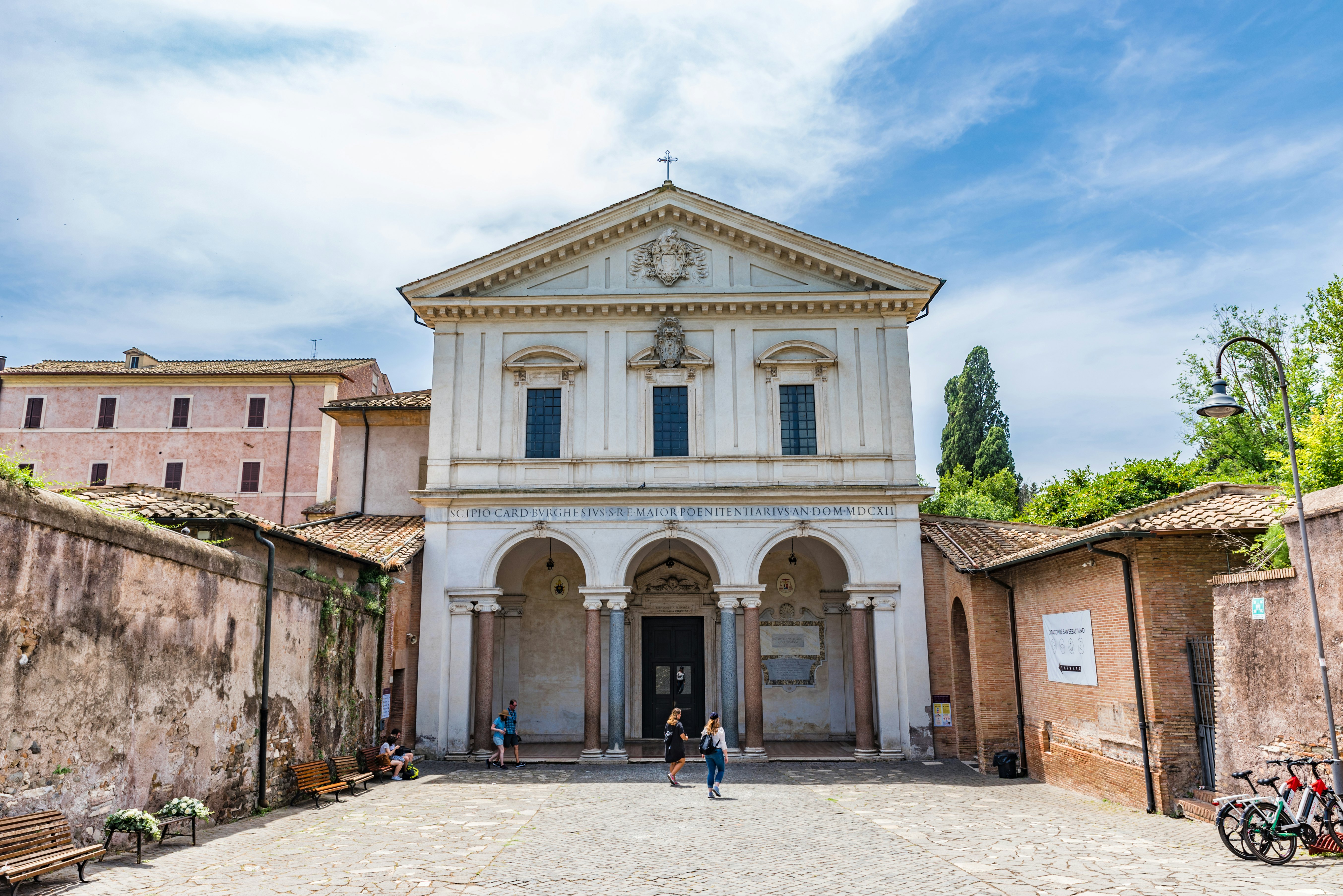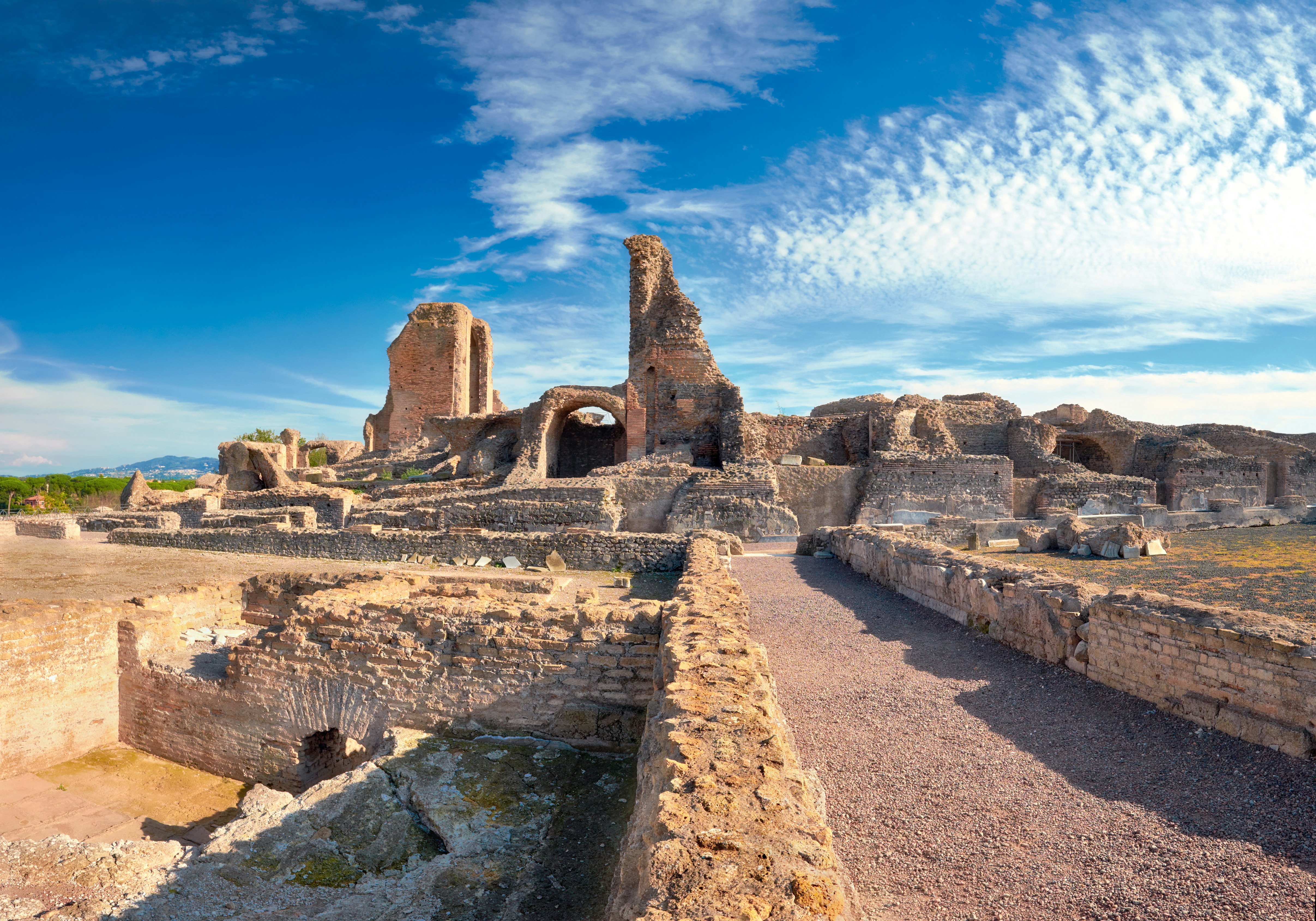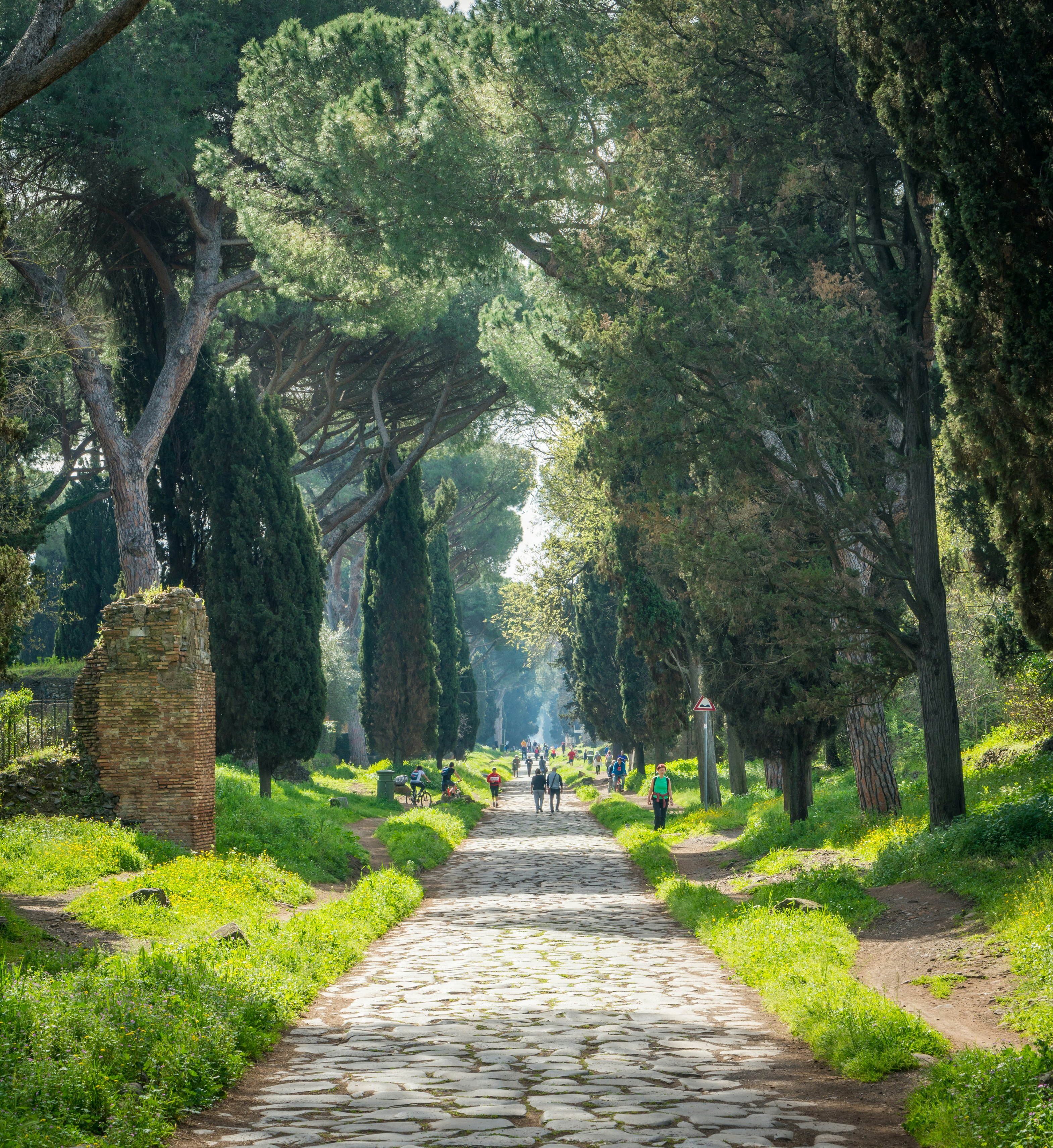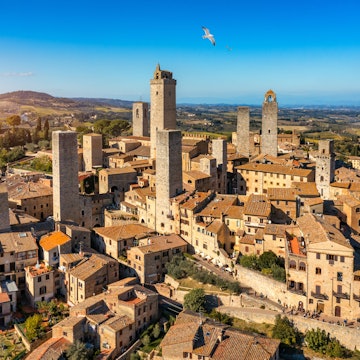

Cyclists along the ancient Appian Way near Rome. Guido Cozzi/Atlantide Phototravel/Getty Images
Of all the monumental ruins that feature so dramatically in Rome's cityscape, few are as thrillingly intact as Via Appia Antica, aka the Appian Way. Flanked by towering pine trees, pea-green fields and romantically-sited villas, this ancient strada (road) is a magnificent sight as it courses through the city's southern reaches.
The Via, known to the ancients as the regina viarum (queen of roads), harbors several memorable attractions, including Rome's most famous catacombs. Further out, it quietens and provides a wonderful setting for a country walk or bucolic bike ride.
Here's all you need to know to get the best out of Via Appia Antica.
What exactly is Via Appia Antica?
The first great highway of the Roman world, Via Appia Antica is the oldest and most celebrated of Rome's consular roads. The first stretch, from Rome to Capua near Naples, was built by the consul Appius Claudius Caecus in 312 BCE. This was later extended and in 190 BCE the road pulled into Brindisi on the southern Adriatic coast.
Initially, the Via was used for moving troops and military supplies, but over time it developed into a key commercial route. It's now one of Rome's most sought-after addresses and in 2024 it was designated a UNESCO World Heritage Site.

How do I get there?
The most accessible, and best preserved, stretch of the Via is the 16km (10-mile) leg that runs southwards from Porta San Sebastiano through the Parco Archeologico dell'Appia Antica. This is where you'll find the major sights, many concentrated in the area around the catacombs.
You can reach the catacombs on foot from Porta San Sebastiano but it's not an especially pleasant walk. The Via is open to traffic here and cars get perilously close as they thunder past. A better option is to take the bus and continue on foot.
Bus 118 serves Appia Antica from Porta San Sebastiano, Circo Massimo metro station and Piazza Venezia. Alternatively, you can get the 218 from San Giovanni.
What's there to see and do on Via Appia Antica?
Commune with the dead at the catacombs
As you walk along Via Appia Antica, you'd never know that beneath your feet is a vast 300km (186-mile) network of catacombs. Built between the 2nd and 5th centuries CE, these underground tunnels were used by the early Christians to bury their dead.
The first catacombs you come to south of Porta San Sebastiano are the Catacombe di San Callisto. This is Rome's largest and most visited catacomb complex, home to tens of thousands of tombs, including those of martyrs and 16 popes. A short hop further on, the Catacombe di San Sebastiano extend beneath the 4th-century basilica of the same name. A third complex, the Catacombe di Santa Domitilla lies about 0.5km (0.3 miles) west of San Callisto. This features the evocative remains of a 4th-century church and some exquisite wall art.

Explore the villas of Rome's elite
Above ground, there's plenty to take in. South of the catacombs, you can explore the hulking remains of Villa di Massenzio, the 4th-century palace of the emperor Maxentius. Highlights here include the well-preserved ruins of a 10,000-seat chariot racetrack, the Circo di Massenzio, and the Mausoleo di Romolo, a circular mausoleum Maxentius built for his 17-year-old son.
Further down the Via are the remains of two more villas: Capo di Bove, and, 3km (2 miles) beyond that, Villa dei Quintili. This aristocratic 2nd-century villa was once one of the area’s most lavish and its towering ruins remain a rousing sight.
Tour tombs and mausoleums
Near Villa di Massenzio, the Mausoleo di Cecilia Metella is one of the Via’s signature sights. A crenelated drum-shaped tower, it started life as a 1st-century BCE tomb before being recycled as a fort in the 1500s and used to collect tolls from passing traffic.
A few kilometers further on, the ruins of a 1st-century BCE tomb known as the Casal Rotondo mark the end of the road for many visitors.
Learn to fight like a gladiator
In 71 BCE, rebel gladiator Spartacus and 6000 of his defeated slave army were crucified along Via Appia Antica. Fittingly, the road is now home to Rome's gladiator school. Complete with a museum and small sandy arena, this is a top choice for families with restless kids. Your little warriors can dress up in fighting garb and learn hand-to-hand combat under the watchful eyes of instructors from the Gruppo Storico Romano.
Can you cycle on the Via Appia Antica?
Via Appia Antica is one of the few places in Rome where you can ride in relative peace. Bikes (and route maps) are available from Eco Bike Roma at the Centro Servizi Appia Antica (nos 58–60). From there you can pedal to the Via’s quieter southern stretches, which have some good longer-distance rides.
With a map, you can easily go it alone but if you'd prefer to go in a group, Eco Bike Roma organizes guided rides along the Via and through the adjacent Caffarella valley.

When's the best time to go?
Sundays are a good time – the Via is closed to traffic and there's a lovely festive atmosphere as tourists hit the sights and Romans roll out for their weekend bike rides. On the flip side, the early stretch of the road can get busy and there are fewer buses on Sundays.
Weather-wise, spring and autumn are the best seasons – it's generally warm and sunny, the wild flowers are out, and the colors are glorious.
Where can I eat?
For a quick panino (bread roll) or light snack, the tree-shaded garden of the Appia Antica Caffè is well placed on the main Via at no 175.
For something more substantial, head to Il Giardino di Giulia e Fratelli, a family-run garden cafe near the Mausoleo di Cecilia Metella. With tables set under colorful orange trees, it's popular with lunching Romans. Ristorante L'Archeologia is a more upmarket choice, serving classy Italian food in classically-attired dining rooms or al fresco under a magnificent 300-year-old wisteria.
Do I need to book anything in advance?
There's no real need to pre-book tickets for the main sites. But note that visits to the catacombs are by guided tour only, so once you've bought your ticket you'll have to wait for the next tour departure time.
What should I wear?
If you're planning to walk the Appia, wear decent walking shoes as the ancient paving stones are very uneven. In fact, on some stretches it's easier to walk (or cycle) on the small path that flanks the main road.
Are there any public toilets on the Via?
No. The only toilets you'll find are at the cafes, restaurants and main attractions.
Where can I get more information?
The Centro Servizi Appia Antica can provide local info and maps of the area. Online, the website of the Parco Archeologico dell'Appia Antica is a useful resource with plenty of practical details.
















